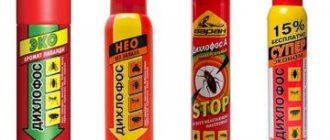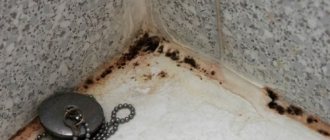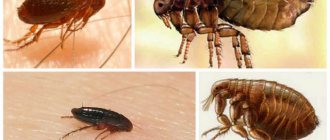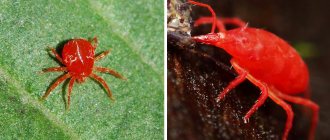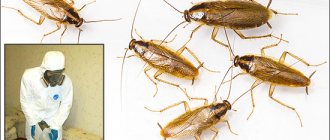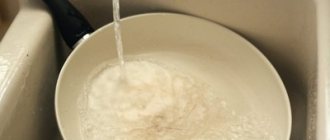How to fight aphids on home chrysanthemums. What the pest looks like and how it is dangerous for the plant. Causes and signs of infection. What control methods will help get rid of aphids at home. Use of chemicals. Mechanical methods of struggle. Use of folk remedies. Prevention.
Chrysanthemum is one of the most beloved and popular plants, which can often be found in the garden and as an indoor flower. It is worth saying that this flower does not require special care; in addition, it is resistant to various types of diseases, which makes it even more in demand.
But unfortunately, there are natural enemies that can harm the plant and even destroy it - these are aphids. Pests can infect not only garden plants, but also domestic ones.
Next, we will take a closer look at the causes and signs of infection, learn how to get rid of aphids on a home chrysanthemum, and also get acquainted with preventive actions that will protect the flower from repeated infections.
Causes and signs of infection
So, aphids are small insects; adult individuals grow to a size of no more than 2 mm. These pests can have a black, white or green body color.
They do not have the ability to jump or fly (except for the winged female), but they easily crawl from one plant to another and spread to new territories. They live in large colonies and reproduce very quickly.
One fertilized female is enough to lay offspring, and soon the plant will have a huge population of pests.
They feed on plant juices. By piercing the leaf plate, they suck out the plant’s nutrients, which makes the flower unable to fully grow and develop. Growth slows down, the protective functions of the plant are weakened, and if nothing is done, the flower may die.
In addition, aphids are carriers of various bacteria and diseases that lead to the death of chrysanthemums. Therefore, upon discovering an infection, it is necessary to take immediate action.
If we talk about natural conditions, pests move from one plant to another, and ants that specifically colonize aphids in new territories can also be the cause. But how do aphids enter living spaces and infect indoor plants? Everything is quite simple.
The most common causes of infection of home chrysanthemum are:
- They can enter the apartment with fresh flowers and herbs that the owners brought from the street.
- It may be found on a bouquet of chrysanthemums, from which it will end up on flowerpots.
- The pest may be in the soil used for planting.
- The winged female can enter the room through an open window, where she will lay eggs in pots of indoor plants.
Since they reproduce very quickly, soon after infection you will notice a huge number of small bugs on the flower. They are often found on the underside of the leaf blade.
The following signs indicate infection:
- The sheet plates curl and can also stick together.
- The flower begins to wither and stop blooming.
- Unopened buds dry out.
- The flowers take on an irregular shape and are deformed.
- In places on the flower you can observe accumulations of a sticky sugary substance.
Of course, you can also notice the pests themselves; with a strong infestation, a large number of them are observed. The remaining remains of cocoons are also visible on the leaves.
How to determine whether chrysanthemums are infested with aphids?
Depending on the type of flower, different types of aphids can parasitize it. Outdoor chrysanthemums are characterized by brown greenhouse specimens, but small black or white specimens may appear on indoor flowers.
In most cases, the source of infection will be unopened buds and young leaves; aphids settle on the inside of leaves and on the surface of young shoots, sucking out all the nutritious juices and minerals. As a result, the shoots dry out and curl into tubes, and the buds lose their shape, turning into a pile of dry petals.
Aphids not only suck out beneficial substances from a young plant, they can infect a flower with harmful microbes, which will lead to the death of the chrysanthemum without the possibility of its restoration; it is this reason that requires the immediate elimination of pests.
Fighting methods
Since aphids feed on plant juices, which contain nutrients vital for the flower, pest control must begin as soon as the infestation is detected.
In fact, a colony of pests only needs a few days to destroy a chrysanthemum. The attentiveness of the owners, as well as timely effective measures will help to quickly get rid of aphids and save the chrysanthemum.
In addition, we must not forget that these insects carry bacteria and diseases. They can cause the appearance of fungal formations that develop due to sugary deposits. Fungal formations also attract other dangerous pests.
Of course, in residential settings there are some restrictions on the use of chemicals. Some drugs that are intended to combat pests have increased toxicity and their use at home poses a danger to the health of people and animals.
But there is also an advantage, unlike garden flowers, it is much easier to completely destroy aphids on home chrysanthemums. Next, we will look at the most effective methods of control and help you choose the right remedy.
Aphids and thrips on chrysanthemum - how to get rid
For a long time there has been a sign that every home should have living plants.
And not in vain - plants can have a beneficial effect on a person and improve mood. They improve the overall energy of the space, saturate the air in which they are located with oxygen. Therefore, offices, apartments, kindergartens are decorated with indoor plants - wherever there is a suitable place. Indoor chrysanthemums are perfect for this place. But it happens that these “beautiful creatures” begin to get sick. Most often, this is due to small pests. These include: aphids and thrips. Aphids are very small and terribly harmful insects. The size barely reaches 2mm. The body is soft and chokes easily. It reproduces quickly and lives in colonies. Therefore, if you do not pay attention immediately, the entire “flower corner” may suffer. Aphids come in different colors. Most often it settles on the lower part of the leaves, the top of the shoots or on the bud itself.
When aphids appear on your plant, it will be noticeable immediately. Rapid deformation of the top of the flower, yellowing and curling of the leaves into a tube. Aphids suck the juice from the chrysanthemum, which exposes it to other diseases, making it very weak.
Chemicals
Specialized drugs are the most effective in pest control. When used correctly, the drugs will not harm human health or pets.
Treatment can be carried out by spraying or by adding pesticides to the soil. Before starting treatment, it is recommended to rinse the plant under running water, which will get rid of some of the pests.
The procedure must be carried out in 2 stages:
- Stage 1. Treatment is carried out after detection of aphids and the first signs of infection.
- Stage 2. Each drug has a certain prolonged effect after application. The second processing is carried out at the end of this validity period. It is required to destroy young individuals that emerge from clutches of eggs.
After applying the drug to a flower, or into the soil, it is recommended to cover it with a film on top for several hours, which will maximize its effectiveness.
You should always remember that chemicals must be used strictly according to the instructions and in compliance with all safety measures. The following recommendations should be followed:
- The procedure must be carried out wearing a respirator and gloves.
- After handling medications, be sure to wash your hands, wash your face and wash your hair.
- Personal protective equipment, as well as all devices that were used during the procedure, must be disposed of.
Next, we will look at the most popular and effective chemicals that are used to control aphids.
Fitoverm
This drug is biological and is safe for people and animals. Has an intestinal contact effect. The mechanism of action of the drug is as follows: after treatment, the active components penetrate through the outer cover of the insect, and also, together with the plant juice, into the intestines.
After which the substances affect the insect’s nervous system, which leads to paralysis and then death. The first results are noticeable 6 hours after treatment. Provides action for 3 weeks.
It is used not only to destroy aphids, but also ticks, snails, etc. It can be purchased in the form of a solution, which is packaged in ampoules. Before use, dilute in water, 1 ampoule per 5 liters.
Inta-vir
Refers to synthetic drugs that are highly effective and show quick results. After contact with the drug, the active substances enter the body and affect the nervous system, causing convulsions, paralysis and death.
Available in the form of tablets that should be diluted in water, 1 tablet per 1 liter of water. The procedure is carried out using a spray bottle and must be applied to all leaves and stems.
The working solution is prepared before use; the working solution cannot be stored due to toxicity. Remember that aphids can develop immunity to poisons, so it is not recommended to use it more than 3 times.
Aktellik
A chemical that is highly effective, but must be used with extreme caution. Causes headaches and nausea in some people.
The room where the treated plant is located must be thoroughly ventilated. The active components penetrate the body with the juice of the plant, which leads to disruption of digestive processes, and the substances also affect the nervous system.
When applying, it is important to treat the leaves on both sides. It is produced in the form of a concentrated liquid, which is diluted with water before use; 1 ml of the drug is required for 1 liter of water.
Neoron
A chemical agent with a contact mode of action. It is highly effective; one procedure is enough to completely destroy pests.
Has a prolonged effect from 10 to 40 days. Available in the form of a concentrated liquid, packaged in ampoules. To prepare a working solution, 2 ml (1 ampoule) is diluted in 2 liters of water.
Treatment of chrysanthemum with insecticide
Thrips can be removed using such effective drugs as Fitoverm or Actellik. After a series of treatments you can get a good result. Before processing plants, you need to carefully prepare them.
Preparation for processing
- Isolate healthy plants from those that have already been affected by thrips (move them to another room).
- Rinse the area where the affected chrysanthemums were located thoroughly. It is necessary to carefully move infected plants, because... larvae or adults may fall out and wait again for a new settlement on the flowers.
- Remove the top layer of soil, because thrips can leave their larvae there.
- Remove all flowers (buds) and affected leaves before treatment with the drug.
- Prepare the drug and a plastic bag.
Plant treatment
After preparing the flower for treatment with the drug, place the pot with the plant in a plastic bag. We process the chrysanthemum, close the bag tightly and leave it for 2-3 hours. The procedure must be repeated at least 3-4 times within 7-10 days.
After you have been able to get rid of all the pests, it is advisable to be attentive to domestic fauna, unknown bouquets of garden flowers and other floral arrangements that may have pests. Ventilate the room only with a net on the window. And then you can enjoy the beauty of your home flora all year round.
Mechanical methods
If the infection was detected at the initial stage, you should seek help from mechanical methods of control, including:
- Manual cleaning. With this method, bugs are collected manually; gloves are required. Damaged leaves should also be removed. The collected leaves and insects are destroyed.
- Blowing. This method uses compressed air. You should take the flowerpot outside and use a household hair dryer. It cannot be used at home, as the insects will scatter throughout the apartment and then return to the flower.
It should be remembered that mechanical methods will not bring results in case of severe infection, when there are severe lesions and a large number of aphids. Mechanical methods can also be used in combination with chemicals or folk remedies.
Preventive measures
Chrysanthemum is a plant with fairly strong immunity. It is not difficult to protect it from aphids if you follow simple prevention rules.
- New plants should be quarantined for two weeks (kept separately from other indoor plants in order to determine the presence of parasites and promptly begin treatment).
- Water the flowers in a timely manner, apply fertilizing (a weakened flower, experiencing a deficiency of nutrients, becomes more vulnerable; additional nutrition would make the plant stronger and more resilient).
- Periodically inspect the flowerpot to exclude the possibility of aphids.
- When replanting, use only high-quality tested soil and new pots.
Indoor chrysanthemums love a lot of light (therefore they should be placed on windows located in the southern part of the house), but do not tolerate heat or direct sunlight.
Immediately after purchasing from the store, the flowers should be inspected and all dry and damaged leaves and twigs should be removed.
When growing chrysanthemums at home, they should not be allowed to dry out. Timely watering and attention are important conditions for growing healthy plants.
Folk remedies
There are quite a lot of folk remedies that can successfully fight aphids. They are absolutely safe, therefore, when small children, pets live in an apartment, or a person has allergic reactions, these recipes are preferred.
Next we will look at the most popular and effective folk recipes.
Soap solution
For this product you must use tar soap. Take 20 grams of soap and 150 ml of water. After mixing the components, stir thoroughly until the soap is completely dissolved.
This solution can be used for spraying and application to the soil. The procedure is carried out once a week and is applied until the aphids completely disappear.
Ammonia
To prepare this remedy, you need to dilute 1 ml of ammonia in 100 grams of water. The working solution is poured into a spray bottle and the chrysanthemum is sprayed. When processing, be sure to cover the soil with a film; you must not allow the product to get into the ground if you spray the lower leaves.
Garlic
To prepare, you will need to peel the head of garlic and chop it finely, then place it in a container and add 1 glass of water. Next, the product should be infused for 40 minutes.
At this stage, a concentrated solution is obtained, so it is diluted with water, bringing the volume to 1 liter. After it needs to be filtered and can be used, processing is carried out every 3 hours.
Tobacco decoction
For this recipe you will need crushed tobacco (1 stack), which is filled with 1 liter of warm water. Then the composition is covered and infused for 2 days. Afterwards, the tincture is placed on the fire and brought to a boil.
The tincture is cooled and filtered. When processing, the soil must be covered with a film, the product is applied to all leaves, stems and buds. After 10 days, the procedure is repeated.
Citrus peel
It is necessary to grind the peel of an orange, tangerine, lemon, you will need 1 glass, and pour 1 liter of boiling water over it. Infuse for 3 days, after which it is filtered. The procedure is carried out 2 times a day; if severe infection is observed, up to 5 treatments per day are allowed.
Onion peel
You should take 100 grams of husk and add 1.5 liters of water. Next, put the mixture on the fire, bring to a boil and cook for 10 minutes. Afterwards the liquid is filtered and cooled. The procedure should be carried out 2 times a day.
It is recommended to change the folk remedies used from time to time so that aphids cannot develop immunity. Remember that the use of folk recipes does not give a positive result; you should turn to chemicals for help.
How to get rid of aphids on home chrysanthemum
Although it is generally accepted that chrysanthemums are extremely resistant to diseases and pests, these plants are still vulnerable to small but numerous parasites - aphids.
And the fact that the flower grows in a pot on the windowsill, and the access of insects from the street is limited, it is not always possible to protect it from the attack of this species. And pests can move from a diseased plant to healthy ones, since not all gardeners can get rid of aphids on home chrysanthemums. Meanwhile, this struggle is not so difficult.
How to understand that a chrysanthemum is affected by aphids
There are a huge number of types of chrysanthemums; depending on this, different types of aphids can parasitize them. Indoor varieties are characterized by the appearance of black and white. Examine the plant carefully. The most favorite parts of chrysanthemums for pests are unopened buds and new tender shoots. Aphids on chrysanthemums feed on plant sap, literally dehydrating them and depriving them of minerals and nutrients.
As a result, the shoots dry out, the leaves become deformed, turn black and curl, the buds dry out and fall off. The insects themselves and traces of their vital activity can be seen. As a rule, parasites prefer the lower leaf part, feeding on it densely. The sticky secretions left by aphids are also noticeable. Excrement and skins of dead insects or those that have molted contaminate the inflorescences.
There are many ways of infecting indoor chrysanthemums with aphids.
- infection from a flower that has newly appeared in the house;
- aphids entering the house with meadow grasses and flowers, garden vegetables and herbs;
- using untreated soil for replanting plants, etc.
If it happens that aphids appear on a chrysanthemum, it is very important to know how to get rid of uninvited guests. Insects reproduce at lightning speed, needing more and more food every day. In addition to the fact that flowers lose their decorative appeal, they may die. Aphids on domestic chrysanthemums should be destroyed as soon as possible. This will save the indoor beauty from death and prevent infection of other plants.
Means to combat aphids
If aphids are found on a domestic chrysanthemum, experienced gardeners will tell you how to get rid of the pest.
And if you don’t have anyone to ask for advice, feel free to go to a store for summer residents. Any such retail outlet will have an effective remedy against aphids.
Chemicals
What remedy to use against aphids on chrysanthemums? Carefully study the proposed range of insecticides.
Among such products, the most popular among lovers of indoor chrysanthemums are:
- Aktara;
- Aktellik;
- Karbofos;
- Confidor.
- Metaphos;
- Fitoverm;
- Phosphomide.
Following the instructions for use, you need to prepare a working solution. Before spraying a chrysanthemum against aphids, you need to remove pets and people from the room, wear gloves and a respirator, and after treatment, do not forget to ventilate the room.
If it is possible to spray on the street or at least on the balcony, this should be used in order to reduce the harmful effects of insecticides on people and animals.
The plant is treated completely, from the root part to the tops of the buds and tips of the leaves. Don't forget about the soil. It can be shed with Aktara.
Since it is not always possible to remove aphids from chrysanthemums the first time, repeated treatment is carried out after 3-7 days.
Traditional methods
How to cure a chrysanthemum from aphids? There are many folk recipes against parasites.
- Ammonia. This remedy is probably in your first aid kit. Ammonia helps get rid of pests on home chrysanthemums very effectively. It is diluted with water (1:10), and using a spray bottle, the plant is sprayed. Repeated treatment is carried out at intervals of 2-3 days. Some craftsmen successfully use store-bought glass cleaning liquid for these purposes, which contains ammonia and is free of harmful impurities;
- Onion peel. Take two handfuls of these vegetable wastes and pour boiling water (a liter of water). On a low power stove, boil the husks for 5 minutes, let the broth brew for a day. Then pour the liquid into a spray bottle and spray the chrysanthemum bush completely;
- Garlic. If you grind a couple of cloves with a press, add 250 ml of warm water and leave for an hour and a half. After filtering, the infusion is diluted with water to a volume of 1 liter. Chrysanthemums are sprayed several times during the day at intervals of 3-4 hours;
- Laundry soap. Dissolve grated laundry soap (or tar soap) in hot water: 2 tablespoons of soap shavings per liter of water. Then allow the product to cool. Spray the chrysanthemum completely with it. You can wash each sheet with a soft cloth. Soap is harmful to the respiratory system of aphids, and its viscosity promotes the formation of a coating that acts as a trap and does not allow insects to escape;
- Citrus peel. Have you eaten an orange (lemon)? Don't rush to throw away the fragrant peel. This is how you can treat chrysanthemums against aphids effectively and safely. To prepare the infusion, the peel is dried and crushed. Then a handful of raw materials is poured with a liter of boiling water and left for three days in a dark place at room temperature. After the exposure time has expired, the infusion is filtered. Using a sprayer, treat the chrysanthemum bush;
- Shag. The unpleasant aroma of tobacco drives out aphids. At the same time, there is a possibility that it will crawl onto neighboring plants if the chrysanthemum being treated is not placed “in quarantine.”
Traditional methods of fighting aphids do not have a toxic effect; there is no need to isolate household members and pets while pests are being hunted. At the same time, chrysanthemums are cleared of insects and quickly recover from damage.
Conclusion
With proper care, chrysanthemums can delight the eye with pretty flowers for a long time, bringing comfort to the home. However, aphids can prevent abundant flowering.
Preventive actions
Preventing an infection is much easier than fighting dangerous aphids later. To protect a flower from a pest, you need to resort to simple preventive measures:
- If new indoor plants are purchased, they should not be placed next to existing flowerpots; they should be placed in a quarantine room. They must remain in quarantine for about 2 weeks. If there are pests on the new flower, they will not be able to spread to other plants. If during this period no signs of infection are found, it can be placed with the rest of the flowerpots.
- Chrysanthemums should be properly cared for by providing regular watering and fertilization. Remember that a healthy plant is much more resistant to pests.
- It is imperative to carry out regular inspections of chrysanthemums; this will allow you to identify the problem in time and prevent strong reproduction of aphids.
- The infected chrysanthemum must be placed in a separate room and not returned to the other flowerpots until the aphids are completely destroyed.
If you properly care for the chrysanthemum, pay attention and care, you can avoid unpleasant consequences.


